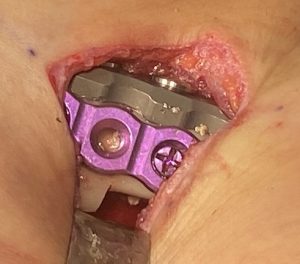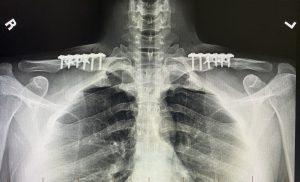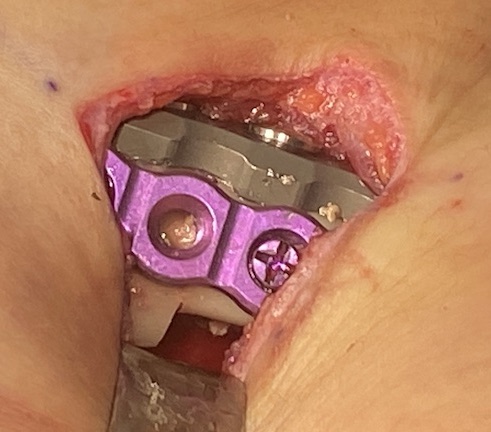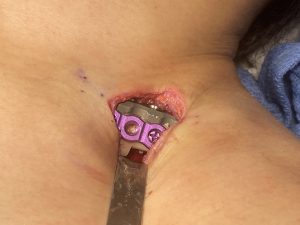Background: The clavicle may be a well known and visible human bone but its anatomic shape is under appreciated. While often perceived as having a relatively symmetric tubular shape throughout its actual dimensions are quite different. First it is not a straight bone but instead has a lazy-s shape that is angulated forward. The thickness of the bone varies along its length with the thickest part at its inner third, it is slightly less thick in the outer third and thinner in the middle third. This correlates to the inner third being connected by relatively fixed sterno-clavicular joint and the outer third up against the highly mobile acromio-clavicular joint.
While these anatomic details may seem interesting as it relates to the occurrence of clavicle fractures it takes on greater clinical significance in clavicle reductive osteotomies. Since the clavicle osteotomy makes a cross-sectional bone cut for segmental removal the two bone ends that are put together are of different thicknesses. While this may have some potential long term implications in the healing and strength restoration of the shortened clavicle the immediate issue its to ensure that the bicortical screws placed are of different lengths on each side of the two joined bone segments. (longer on the sternal medial side and shorter on the distal shoulder joint side)
Case Study: This female desired to have a less wide square shoulder shape with a bideltoid distance of 51cms. The clavicle lengths were 17.5cms on the left and 17cms on the right.



Bicortical screw engagement is very important for stable plate fixation across the osteotomy union site. This helps prevent screw pullout with arm motion and torsional forces across the clavicle. While it is not an issue off the tip of the screw is slightly longer than the inferior cortex one does not want the tip protrusion to be excessive. is interesting is that with removal of a relatively small segment of the clavicle how much different the size of the two bone ends can be.
It is interesting that removal of a relatively small segment of clavicle bone can result in two ends that have very different thicknesses. This demonstrates that the thickness of the clavicle bone is not uniform along its length which is well known from anatomic studies. This has some immediate intraoperative fixation application implications. Whether there are any long-term bone stability concerns if the plates are ever removed are the healed osteotomy site is not known.
Case Highlights:
1) The clavicle is well known to have varying thicknesses along its, being thicker near the joint areas and thinnest in the mid shaft area.
2) Clavicle reduction osteotomies remove bone from the mid-shaft area which brings together two uneven bone end thicknesses.
3) Because of the two different bone thicknesses different length screws are needed for bicortical purchase.
Dr. Barry Eppley
World-Renowned Plastic Surgeon





